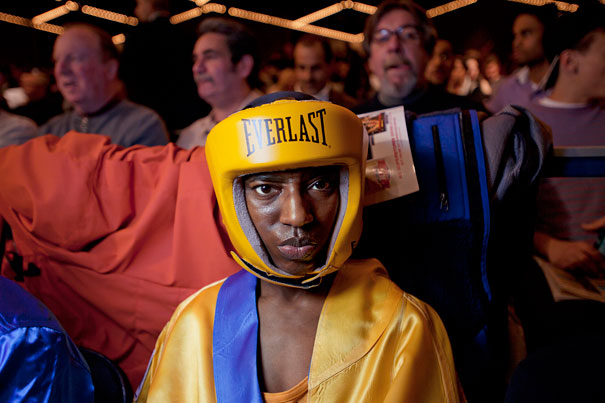
The photo of Camille Currie before her last fight as an amateur fighter is from “Boxing Lessons” by Sue Jaye Johnson. Johnson is one of this year’s visiting faculty members at Harvard’s Department of Visual and Environmental Studies. The eight faculty have work on display in “Visiting Faculty 2011-12” through Oct. 9 at the Carpenter Center.
Photo courtesy of Sue Jaye Johnson
Creative opportunity
Tradition of visiting faculty brings art and insight to classroom
One draws for Mad magazine. One photographs women boxers. One mixes animation with architecture.
Welcome to the quirky, quizzical world of this year’s visiting faculty members at Harvard’s Department of Visual and Environmental Studies (VES). There are eight in all: Five will teach courses this fall; three in the spring.
All of them like the idea of taking their art into the classroom.
“I don’t see any place better where I can learn new things,” said animator and filmmaker Allen Sayegh, M.Des.S. ’96, a Cambridge architect who is also a lecturer at the Harvard Graduate School of Design. “Teaching and research are very complementary ways of working.”
Photographer Jeff Sheng ’02 mixes his creative practice with teaching anyway, at the University of California, Santa Barbara. “I enjoy sharing the lessons of my own journey as an artist and photographer,” he wrote in an email — adding that a “synergy” often comes out of it that inspires both the student and teacher.
Writer, illustrator, and graphic novelist Peter Kuper feels the same way, even after 25 years of mixing time in the classroom with a busy professional schedule. He is co-founder of the political graphics magazine World War 3 Illustrated and also draws the Spy vs. Spy feature for Mad magazine.
“It has always fed the work I’m doing outside of school,” said Kuper of teaching, in an email. “Talking about all the aspects of storytelling and re-examining them in a classroom setting helps remind me of the vast possibilities of the form.”
Photographer Sue Jaye Johnson ’91-’92, like Sheng, is a onetime VES concentrator. She has her favorite places to work, including home (New York’s East Village), Cape Cod, and Cape Town, South Africa (where she co-founded Iliso Labantu, a photographers’ collective). But Johnson is grateful for the Cambridge sojourn this coming spring.
“Being in the classroom is like being back in school,” she wrote. “I don’t think of it so much as teaching but rather as guiding us on a course of inquiry.”
Then again, there is teaching — and there is teaching at Harvard, Johnson added. “If Harvard, in its vast riches, is a playground for budding scientists, economists, and historians, it is even more so for artists. [VES] is one of Harvard’s best-kept secrets.”
She will also be busy with her own work. For one, “I am hot on the trail of the USA women’s boxing team,” said Johnson. “Some projects are hard to get off the ground. This one swept me up like a tsunami and I am curious to see where it will spit me out.” (The 2012 Olympics, in London, will be the first to include women’s boxing.)
Kuper, too, will be busy on several projects, including a graphic novel about Mexico, when he teaches in the spring.
Sheng, whose recent project “Don’t Ask, Don’t Tell” featured portraits of soldiers and Marines affected by the policy, will use his time at Harvard to explore another region of pain: teen suicides.
Johnson would consider moving back to New England, where she has many friends. Sheng misses everything about Boston except the cold. He seems set on the West Coast, where he moved after an unhappy year of trying to make it as an artist in “crowded, oppressive, and expensive” New York.
But both Sheng and Johnson are looking forward to being close to some of their early inspirations. Sheng took a class with photographer Deborah Bright, who will also be a visiting professor this year at VES. She divides her time between Harvard and the Rhode Island School of Design.
Johnson will be in the company of her onetime inspiration John Stilgoe, who is still on the VES faculty and is now the Robert and Lois Orchard Professor in the History of Landscape. “He taught us how to see, how to observe, and how to keep a sense of wonder about the world around us,” she said. “Everything came from that foundation.”
This spring, Johnson will also share the VES faculty roster with famed photographer Chris Killip, “a quiet, behind-the-scenes champion of my work since the first time we met.” Two other inspirations are no longer at Harvard: Christopher James teaches at the Art Institute of Boston and Susan Meiselas, an international photo documentarian, moved to full-time at Magnum. (Johnson later helped her with www.akaKURDISTAN.com, an archive of untold stories and little-seen pictures.)
“As teachers,” said Johnson of her Harvard mentors, “they encouraged us to take risks and disregard the constraints of the marketplace, but they still held us to very rigorous professional and academic standards. I graduated feeling very prepared and very supported.”
Johnson will also join other visiting VES professors in bringing to Harvard a sense of the real world for artists — a place not only of art-making but of “strategic planning, marketing, and fundraising,” she said. “These are skills I think every artist needs but they are not traditionally taught in art school.”
Luckily for the rest of us, the charm and insight of these visiting artists — including David Hilliard, Amber Davis Tourlentes, and Terah Maher, M.Arch ’06 — are not just for students. Each will offer a public lecture; the first, by Kuper, is Sept. 15.
And you can see some of their work in a visiting faculty exhibit, up today through Oct. 9 at the Carpenter Center for the Visual Arts.
On one wall of the main gallery, a three-panel series by Kuper is a darkly comic re-imagining of German expressionism. In the panels, a well-dressed mouse races from a wide world to a world of ever-tightening walls and mazes. At the end: a mousetrap, and a looming cat.
Around the corner, Sheng’s troubled gay soldiers loom in large prints, hiding their faces in brooding, anonymous interiors.
Johnson’s boxers are also in the gallery. Four of them, one by one, with eyes like bullets. The photos give off an air of vitality and defiance.
A world of art at VES
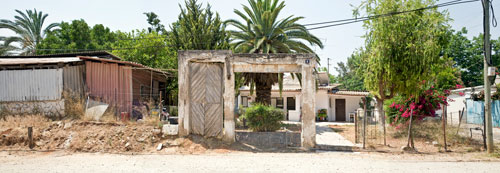
“Gate from former Palestinian home, Yehudiyya, Israel”
A photograph by Deborah Bright, from her series “Destruction Layer: Palestine in Israel 60 years after 1948.”
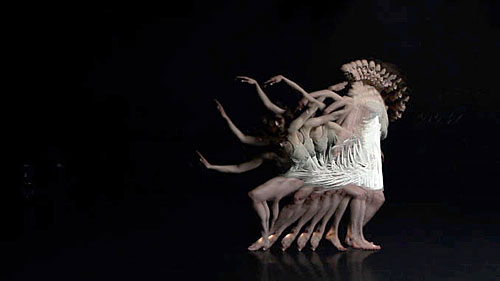
“Choros”
Terah Maher’s film work, influenced by her years as a modern dancer, explores the structural systems inherent in animation to extend the expressive potential of the human body. This is a still from her animated film “Choros.”
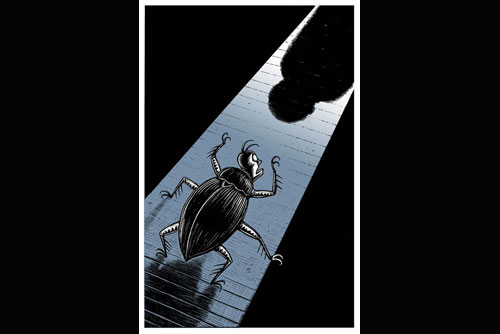
Kafka-esque
Peter Kuper is co-founder of the political graphics magazine World War 3 Illustrated. Since 1997, he has written and drawn “Spy vs. Spy” for MAD Magazine every issue.
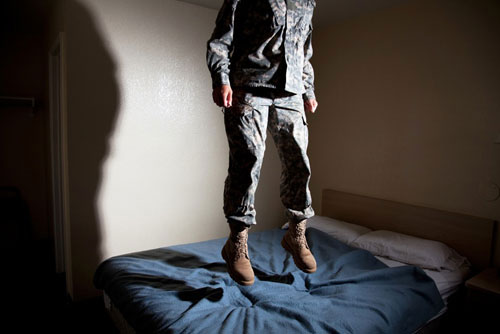
“Don’t Ask, Don’t Tell”
Jeff Sheng’s most recent photo series, “Don’t Ask, Don’t Tell,” featured closeted service members in the United States military affected by the controversial policy.
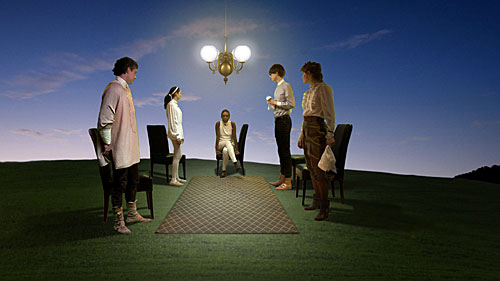
“Play”
Allen Sayegh is an architect and a designer. He synthesizes his knowledge of architecture, film, interaction design, and animation to build innovative interfaces and responsive environments.
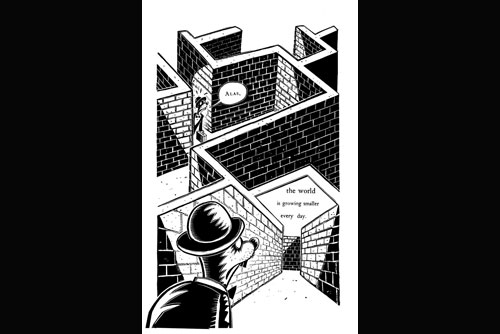
Rat race
Another series by Peter Kuper is a darkly comic re-imagining of German Expressionism. In the panels, a well-dressed mouse races from a wide world to a world of ever-tightening walls and mazes. At the end: a mousetrap, and a looming cat.
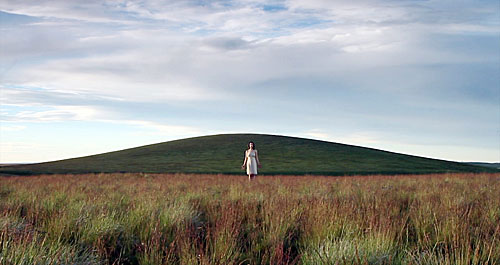
“Choros”
Terah Maher’s film work, influenced by her years as a modern dancer, explores the structural systems inherent in animation to extend the expressive potential of the human body. This is a still from her animated film “Choros.”
Exhibit and speakers
“Visiting Faculty 2011-12,” on display Aug. 29-Oct. 9, exhibits work by eight visiting faculty at Harvard’s Department of Visual and Environmental Studies at the Carpenter Center for the Visual Arts, 24 Quincy St. Artist talks, all at 6 p.m., are in Carpenter Center Room B-04: Sept. 15, Peter Kuper; Sept. 22, Jeff Sheng; Oct. 6, David Hilliard; Oct. 20, Allen Sayegh; Oct. 27, Deborah Bright; Feb. 23, Amber Davis Tourlentes; March 8, Terah Maher; and April 5, Sue Jaye Johnson.




